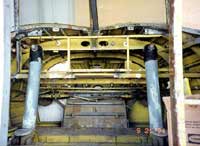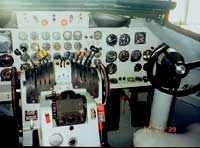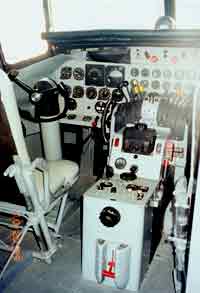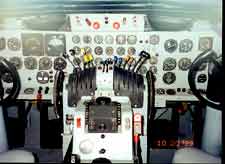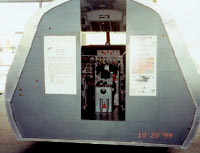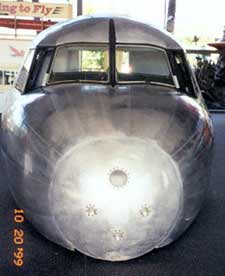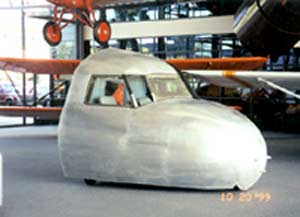Convair was created in 1941 when Vultee Aircraft of Downey bought Consolidated Aircraft of San Diego, both California companies. Convair produced a series of classic aircraft which included the B-24 Liberator, the B-36 Peacemaker and the PBY Catalina Flying Boat.
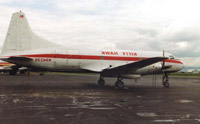 |
|
Convair
240
|
American Airlines was looking for a modern, pressurized, twin-engined, 40-seat pressurized airliner for use in local service. As a result, American ordered 75 of these aircraft. The airplane first flew on March 16, 1947 with the first delivery to American on February 28, 1948. It was the first pressurized twin-engined airliner to enter service. The American order was followed with orders from Western Airlines, Continental Airlines, Pan American Airways, KLM, and Trans-Australia
 |
C-131 |
Airlines adding an additional
fifty aircraft. A total of 176 were eventually ordered. Convair also sold
the CV-240 as a military transport (C-131) and trainer
(T-29) adding an additional 39 aircraft sold.
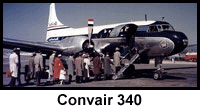 altitude
performance. This aircraft was designated the CV-340 and entered service
in 1952. A total of 311 aircraft of this version were sold. The last in
the series was the CV-440 which entered service in 1955 sold 179 aircraft
and could carry up to 52 passengers. The Convair 240/340/440 series aircraft
saw world wide service with over 1000 built including military aircraft.
The later units were refitted with turboprop engines.
altitude
performance. This aircraft was designated the CV-340 and entered service
in 1952. A total of 311 aircraft of this version were sold. The last in
the series was the CV-440 which entered service in 1955 sold 179 aircraft
and could carry up to 52 passengers. The Convair 240/340/440 series aircraft
saw world wide service with over 1000 built including military aircraft.
The later units were refitted with turboprop engines.The Convair 240 is an all metal, low-wing monoplane with a retractable tricycle landing gear. The rudder and trailing edges of the elevator were made of fiberglass. Power was provided by two Pratt & Whitney Double Wasp R-2800-CA3 eighteen cylinder air-cooled engines, each producing 2,400 horsepower. The engines were housed in a four-panel clamshell cowling which permitted unrestricted access for maintenance. The pressurized fuselage had a circular cross-section and sat 40 passengers four abreast in ten rows. The cockpit was designed for two pilots.
 |
|
Convair
440
|
The wingspan was 91 feet, 9 inches, with a fuselage length of 74 feet 8 inches, and a height of 26 feet 11 inches. Empty weight was 25,445 pounds with a maximum gross weight of 42,500 pounds. Maximum speed was 315 miles per hour, maximum cruise was 280 miles per hour, a ceiling of 16,000 feet, a range of 1,200 miles, and a climb rate of 1,520 feet per minute.
Restoring a Convair 240 Cockpit
In 1994 the Museum of Flying acquired a salvaged Convair 240 cockpit where the fuselage had been cut just aft of the cockpit bulkhead. The Museum decided to restore the cockpit as an interactive teaching aide for the children’s area.
 |
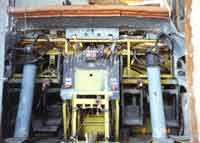 |
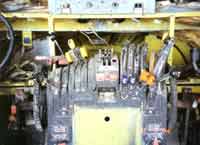 |
|
Convair
240 Cockpit
|
Before
Starting
|
Center
Console
|
For easy access, to the cockpit, the nose wheel compartment below the cockpit floor was removed. This was done by first cutting the outer skin of the fuselage just below the cockpit floor and then cutting out the inner box structure that housed the nose wheel. Large caster wheels were added to facilitate the moving of the cockpit around the Museum.
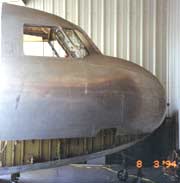 |
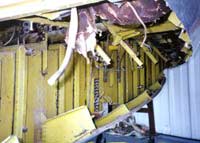 |
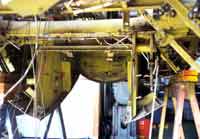 |
||||||||||||||||||||||||||||
|
Cutting
Outer Skin
|
Removing
Hardware
|
Wheel
Well Structure
|
||||||||||||||||||||||||||||
|
Spring loaded cables were connected to the control wheels to simulate rudder and elevator loading. A shock absorber was connected to the control stick to prevent a child from quickly pulling back on the stick and hurting a child in the next seat. Once these tasks were accomplished the interior of the cockpit was stripped and cleaned. The center consul was removed and refurbished. The original fiberglass side panels were replaced with aluminum. New floor panels were made where required and an electrical power box was installed under the floor boards. |
||||||||||||||||||||||||||||||
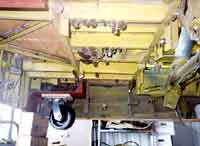 |
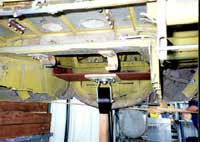 |
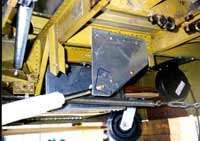 |
||||||||||||||||||||||||||||
|
Side
Caster
|
Center
Caster
|
Control
Shock Absorber and Spring
|
||||||||||||||||||||||||||||
When the
Museum obtained the cockpit, all instruments had been removed along
with the panels. To repopulate the cockpit the Museum used spare instruments
that were available. Unfortunately this was not enough to complete
the restoration. Through Museum contacts, a derelict Convair 240 was
located at the Santa Maria Airport in Northern California. When the
team arrived at the airport they found that the aircraft was sitting
out on the field for many years and that the weather and birds had
made a mess of the interior. The required instruments and panels were
obtained to continue the restoration. |
||||||||||||||||||||||||||||||
|
||||||||||||||||||||||||||||||
